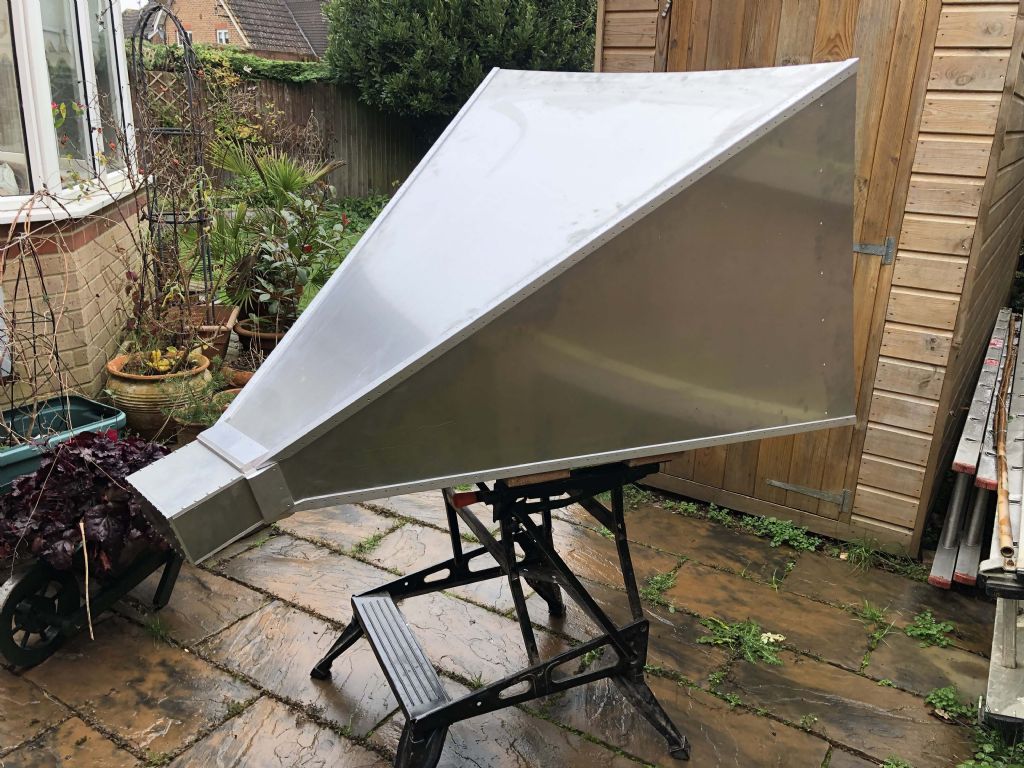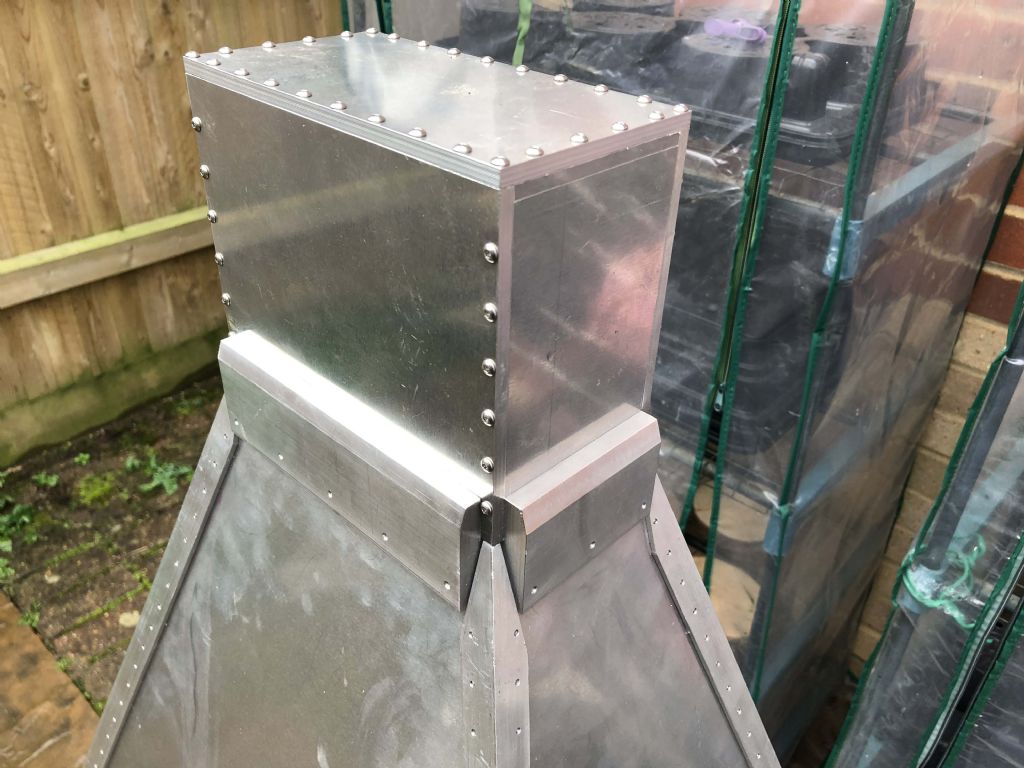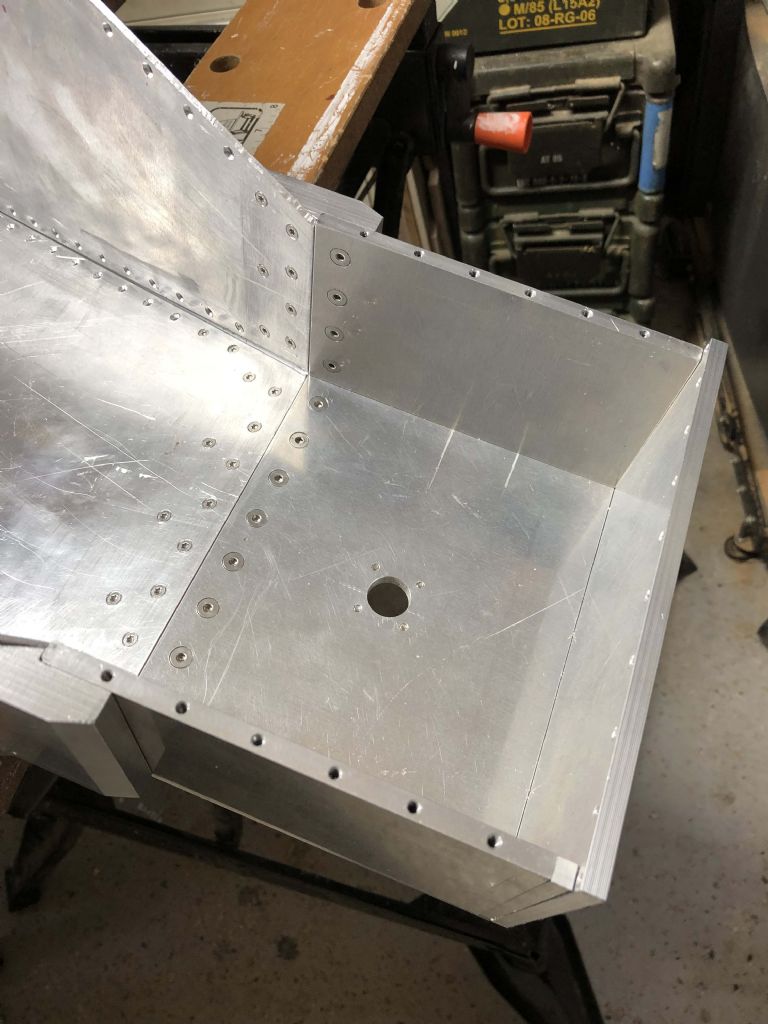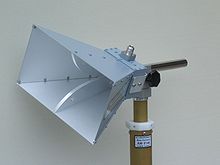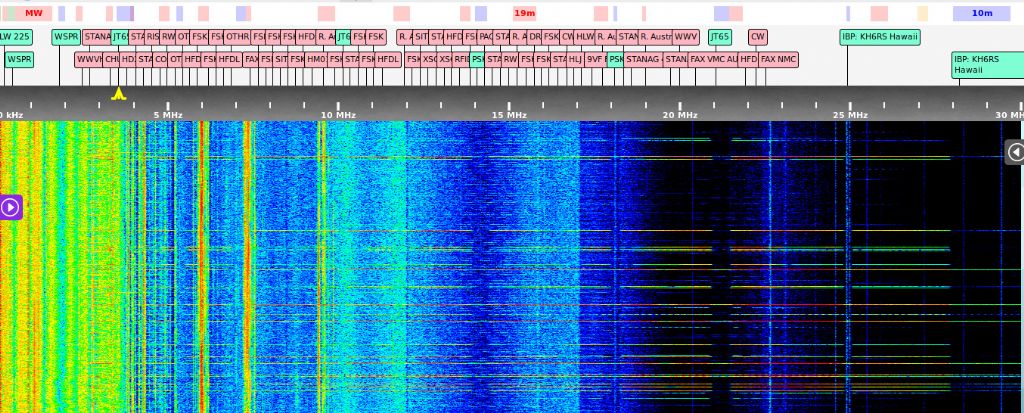Nice Horn that Clive! Have you an idea of the weight?
I must admit I would have thought a Parabolic dish antenna would be far easier to mount, manipulate and set up.
I realise you are not into antenna – Is your brother in law an antenna guru?
A 1 meter diameter dish ( almost the same frontal area as the horn) of F/D ratio around 0.4 ( typical of most small TVRO dishes), fed with a very easy to make patch antenna or better still a 2 to 3 turn helical antenna ( even easier to make) will give an antenna of around 65 to 70% efficiency, and gain of 21 to 23dB. If using the helical feed it has the advantage of only 3dB signal loss for cross polarised signals, very typical of the hydrogen HI line radiation oft rapid polarisation oscillation. The horn would give 3dB more gain if aligned with the signal polarisation, and 'no-gain' if cross polarised.
The dish would be much lighter and not require polarisation rotation if fed with the helical. Wind loading would be a little more, maybe 20% or so, front on, and probably less side on.
All those screws….! My Goodness.
I think welding on that size may cause some distortion, but even 5mm distortion would affect the gain by no more than 1 to 1.5dB at worst.
Do you have photos of the curved transition pieces? Those are the trick in the matching..
Regards
Joe
Edited By Joseph Noci 1 on 02/12/2018 12:40:31
SillyOldDuffer.


